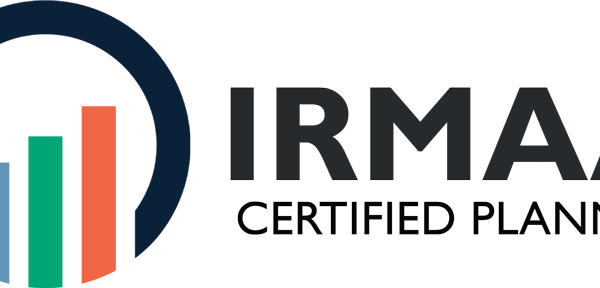However you want to look at it when it to comes to Medicare’s Part D and Presidents the President and their Administration have a large role in what the costs of coverage will be.
What is Medicare Part D:
According to Medicare.gov (the federal government) Part D is optional prescription drug coverage for those in Original Medicare and is available for those who:
- Have Medicare Part A (Hospital Insurance) or Part B (Medical Insurance).
- Live in the service area of the plan they are choosing.
- Are a U.S. citizen or lawfully present in the U.S.
- Complete an enrollment request during a valid election period.
Who provides Medicare Part D coverage:
According to the Medicare Board of Trustees Medicare Part D is simply “access to drug insurance coverage on a voluntary basis” with the access being “heavily subsidized by Medicare”.
Ultimately, private health insurers run the day-to-day operations, create and also sell Part D plans while they are also paid to do so by the government.
Private Health Insurers are responsible for (on a small scale):
- Setting the monthly premium and cost of medications.
- Creating the drug formularies (list of drugs the plan will cover).
- Running the day-to-day operations of the Part D Plan.
The government is responsible for (on a small scale):
- The terms of coverage and regulations that the private health insurers must follow (Tier Structure, Gap Coverage etc…)
- The annual deductible if a Part D plan is to have one.
- Paying subsidies to the private health insurers help offset the costs that Medicare beneficiaries will incur.
So, when it comes to Medicare Part D which President has done the best?
Please note that there are no regulations stating that the private health insurers must maintain any Part D Plan from year to year.
If a private health insurer decides that the current year’s Part D Plan is not working to their standards they can and most likely will close that Part D Plan once the year is over.
Historically, about one-third of all Part D Plans do not continue for more than 2 years.
Here is a breakdown of how continuous Medicare Part D Plans have inflated in terms of Premiums and Total Costs throughout each President’s Term in Office:
Medicare Part D and Presidents: George Bush (2007 – 2009):
Under President Bush’s 2 Terms in Office Medicare Part D was established (2002) and then rolled out to the public (2007).
During his only 2 years of overseeing the program Premiums and Total Cost grew by the largest amount on record while 20% of the original Part D Plans closed.
The breakdown of the number of Part D plans and President Bush:
- Number of Plans in 2007 = 2,688.
- Number of Pans still existing in 2009 = 2,168
- 22.24% of the original Part D Plans issued in 2007 close.
- 2 new Part D Plans were made available.
- The average monthly premium for these new Part D Plans = $42.26.
Premium and Total Cost growth for Medicare Part D and President George Bush:
- Premium increase on an annual average=16.69%.
- $35.03 = Average monthly premium in 2007.
- $47.70 = Average monthly premium in 2009.
- $42.26 = Average monthly premium for 2 new Plans in 2009
- Plans are only available in Florida and Michigan.
- $42.26 = Average monthly premium for 2 new Plans in 2009
- Total Cost (premium + deductible) increase = 13.55%.
| President George Bush (R) 2007 – 2009 | |||
| Original number of Part D Plans | 2,788 | ||
| Part D Plans Remaining | 2,168 | ||
| Number of Part D dropped Plans | 620 | ||
| Existing Plans Cost Breakdown | |||
| 2007 | 2009 | % Change | |
| Premium | $35.03 | $47.70 | 16.69% |
| Premium + Deductible | $43.45 | $56.02 | 13.55% |
Medicare Part D and Presidents: Barrack Obama (2010 – 2013):
During Pres. Obama’s 1st Term in Office 62% of the Part D Plans created during his first year close while the remaining Part D Plans increase in costs annually by over 5.00%.
Thankfully, 7 new Part D plans were opened, and they were significantly lower in terms of the monthly Premium than the existing Part D Plans.
The breakdown of the number of Part D Plans and President Obama’s 1st Term:
- Number of Plans in 2010 = 2,366
- Number of Plans in 2013 = 899
- 62% of all Part D Plans from 2010 close by 2013.
- 7 new Part D Plans were created.
The breakdown of Cost for Medicare Part D Plans and President Obama’s 1st Term:
- Premiums increase on an annual average = 5.35%.
- $50.11 = Average monthly premium in 2010.
- $58.59 = Average monthly premium by 2013.
- $46.40 = Average monthly premium for 7 new Plans in 2013.
- Total Cost (premium + deductible) increase = 4.60%.
| President Barrack Obama (D) 2010 – 2013 | |||
| Original number of Part D Plans | 2,366 | ||
| Part D Plans Remaining | 899 | ||
| Number of Part D dropped Plans | 1,467 | ||
| Existing Plans Cost Breakdown | |||
| 2010 | 2013 | % Change | |
| Premium | $50.11 | $58.59 | 5.35% |
| Premium + Deductible | $63.15 | $72.27 | 4.60% |
Medicare Part D and Presidents: Barrack Obama (2014 – 2017):
In Pres. Obama’s 2nd Term in Office 53.42% of all Plans that are available in 2014 close by the end of his Presidency in 2017.
The existing Part D plans grow by an average of 4% while the new Plans in 2017 are 18% more expensive.
The breakdown of the Number of Part D Plans and President Obama’s 2nd Term
- Number of Plans in 2014 = 1,651
- Number of Plans in 2017 = 769
- 53.42% of all Part D Plans from 2014 close by 2017.
- 5 new Part D Plans were created.
The breakdown of Costs or Medicare Part D Plans and President Obama’s 2nd Term:
- Premiums increase on an annual average = 4.04%.
- $46.94 = Average monthly premium in 2014.
- $52.86 = Average monthly premium by 2017
- $62.41 = Average monthly premium for 5 new Plans in 2017.
- Total Cost (premium + deductible) increase = 4.60%.
| President Barrack Obama (D) 2014 – 2017 | |||
| Original number of Part D Plans | 1,651 | ||
| Part D Plans Remaining | 769 | ||
| Number of Part D dropped Plans | 882 | ||
| Existing Plans Cost Breakdown | |||
| 2014 | 2017 | % Change | |
| Premium | $46.94 | $52.86 | 4.04% |
| Premium + Deductible | $62.01 | $71.81 | 5.02% |
Medicare Part D and Presidents: Donald Trump (2018 – 2021):
Under President Donald Trump the Part D Plans will undergo the smallest annual increases in both Premiums and Total Costs on record.
10 new Part D plans are created with Premiums and Total Costs both being cheaper than the existing Plans.
The breakdown of the Number of Part D Plans and President Trump’s Presidency:
- Number of Plans in 2018 = 1,172.
- Number of Plans by 2021 = 947.
- Only 19.20% of all Part D Plans from 2018 close by 2021.
- 10 new Part D Plans were created.
The breakdown of Costs or Medicare Part D Plans and President Trump’s Presidency:
- Premiums increase on an annual average = 1.36%.
- $48.05 = Average monthly premium in 2018.
- $50.33 = Average monthly premium by 2021.
- $47.20 = Average monthly premium for 10 new Plans in 2021.
- Total Cost (premium + deductible) increase = 2.13%.
| President Donald Trump (R) 2018 – 2021 | |||
| Original number of Part D Plans | 1,172 | ||
| Part D Plans Remaining | 947 | ||
| Number of Part D dropped Plans | 225 | ||
| Existing Plans Cost Breakdown | |||
| 2018 | 2021 | % Change | |
| Premium | $48.05 | $50.03 | 1.36% |
| Premium + Deductible | $70.00 | $74.56 | 2.13% |
Medicare Part D and Presidents: Joseph Biden (2022 – 2024):
During President Biden’s Term in Office Congress passes the Inflation Reduction Act (IRA).
The IRA places caps on how much Part D plan providers (private health insurers) can increase Part D Plan Premiums on an annual basis through 2029.
To quote the IRA:
“The base beneficiary premium for a prescription drug plan for a month in 2024 through 2029 shall be the lesser of:
- The base beneficiary premium computed as if legislation was not enacted or
- An increase of 6 percent.”
Unfortunately for Medicare Part D beneficiaries from 2022 to 2024 the Part D premiums increased by over 13% annually.
The breakdown of the Number of Part D Plans and President Biden’s Presidency:
- Number of Plans in 2022 = 1,143.
- Number of Plans by 2021 = 953.
- Only 16.62% of all Part D Plans from 2022 close by 2024.
- There are no new Part D Plans created and it is not good news.
The breakdown of Costs or Medicare Part D Plans and President Biden’s Presidency:
- Premiums increase on an annual average = 13.24%.
- $49.84 = Average monthly premium in 2022.
- $63.90 = Average monthly premium by 2024.
- Total Cost (premium + deductible) increase = 2.13%.
With no new Part D Plans being created under Pres. Biden’s Presidency retirees who found their Part D plans increasing by double digits had no other options but to pay more.
| President Joseph Biden (D) 2022 – 2024 | |||
| Original number of Part D Plans | 1,143 | ||
| Part D Plans Remaining | 953 | ||
| Number of Part D dropped Plans | 190 | ||
| Existing Plans Cost Breakdown | |||
| 2022 | 2024 | % Change | |
| Premium | $49.84 | $63.90 | 13.24% |
| Premium + Deductible | $79.05 | $94.83 | 9.53% |
Conclusion to Medicare Part D and Presidents:
Due to the federal regulations that the private health insurers must follow as well as the money (subsidies) they receive from the government each Presidential Administration is and will be directly responsible for what retirees in Medicare have to pay for Part D coverage.
Since the inception of Medicare Part D’s coverage in 2007 President Trump has done the best job in controlling what retirees have to pay on an annual basis.
What the future may bring for Medicare Part D:
As it can be seen from the information above, each year private health insurers drop plans and then create new ones the following year.
To avoid the constraints of the Inflation Reduction Act all the private health insurers need to do is to close already existing Part D Plans and then create new ones for the upcoming year.
New Part D Plans do NOT have to adhere to the 6.00% cap on Premiums that the IRA imposes.
If the Inflation Reduction Act is not changed the end result just may be that:
- Many retirees will have to go through the process of finding a new Part D Plan each and every year.
- Part D Premiums will grow excessively higher each year to offset the costs that the private health insurers incur from having to create new Part D Plans.
With now over 11,600 people retiring each day and having to enroll into Medicare to receive their Social Security benefit any significant Part D increases may alter their retirement even in an adverse way.



